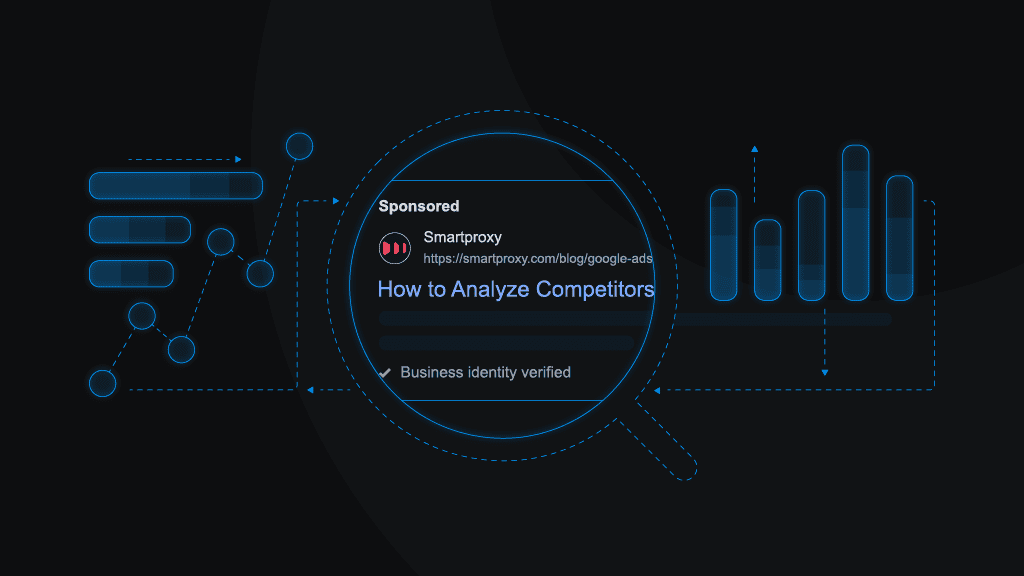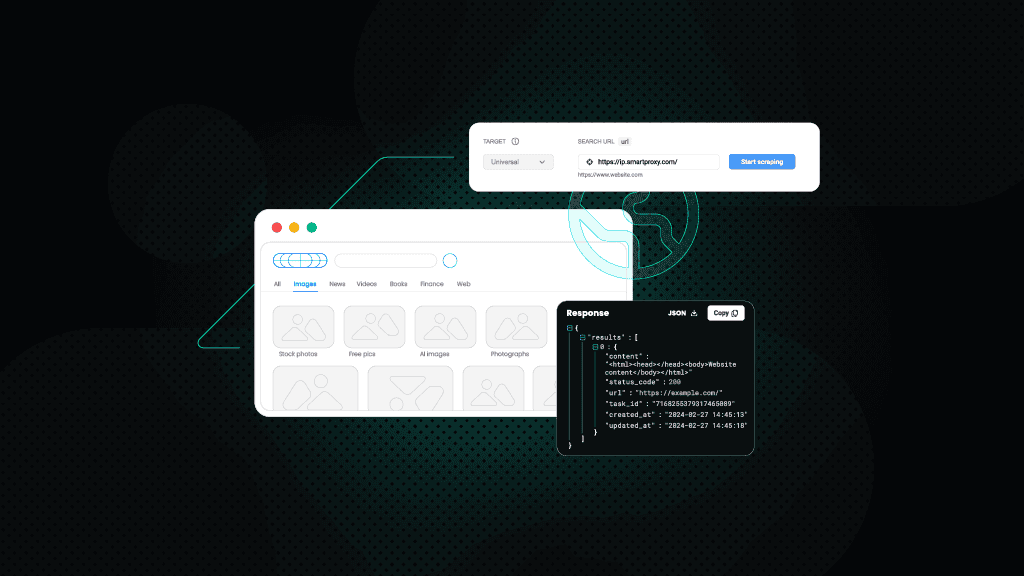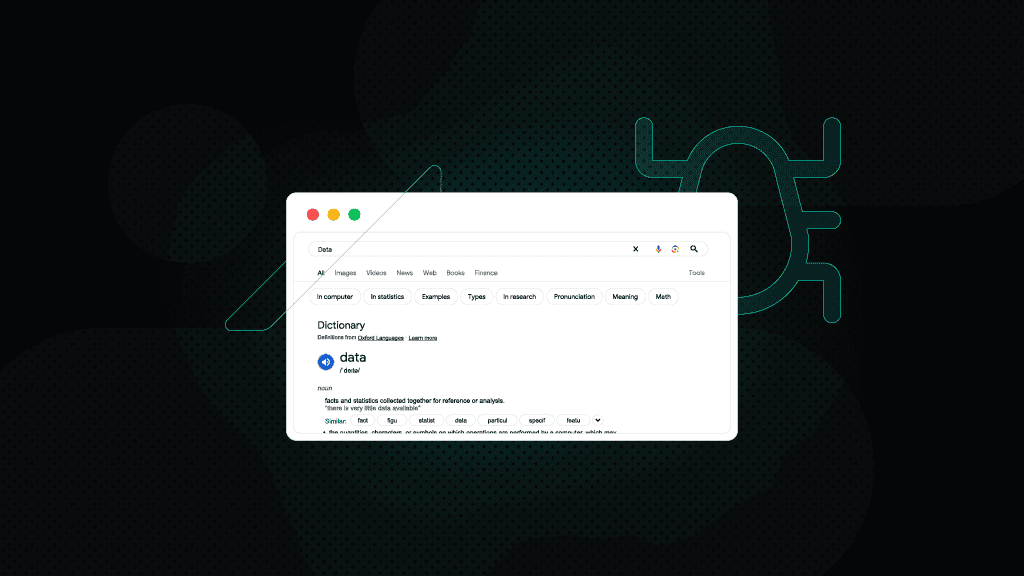How to Analyze Competitors in Google Ads: Guide, Systems, and Tools 2025
Competitor analysis in Google Ads equips businesses with the tools to scrutinize rivals, adapt to market trends, and enhance advertising strategies. By continuously monitoring competitors and leveraging their insights, you can boost performance, maximize ROI, and secure a competitive edge. In this blog post, we cover key metrics, essential tools, and strategic insights to help you optimize campaigns and stay ahead of the competition.
Importance of competitor analysis
Competitor analysis is critical for strategic planning in Google Ads, offering several key benefits:
- Enhancing strategic decision-making. Transform raw data into actionable insights about competitors’ channels, pricing, and customer engagement, informing better market positioning.
- Leveraging market insights. Identify emerging trends and potential threats, allowing for proactive adjustments to advertising tactics.
- Benchmarking and performance measurement. Compare your performance against industry standards to optimize bidding strategies, allocate budgets effectively, and ultimately boost ROI.
Understanding and evaluating competitors’ strategies in Google Ads enables businesses to identify what works and what doesn’t. By analyzing various metrics and ad elements, companies can refine their own approaches to secure a stronger market position.
Types of competitor analysis
Competitor analysis should be an ongoing process to develop an excellent Google Ads strategy. As competitors evolve their strategies, businesses must regularly refine their own tactics based on market insights to optimize campaigns. Below are several methods you can take to uncover their tactics.
Identifying competitors
Begin by pinpointing the right competitors – both direct and indirect. This step lays the foundation for a thorough analysis. A systematic approach is essential for identifying your key competitors:
- Conduct Google searches. Perform searches for primary keywords to see which advertisers consistently appear in the search results, providing an initial list of competitors.
- Employ research tools. Utilize platforms such as Semrush and Ahrefs to help identify advertisers bidding on similar keywords, offering insights into direct competition.
- Apply industry knowledge. Use your market expertise to identify the leading players in your segment.
- Analyze ad performance metrics. Evaluate key indicators like click-through rate (CTR), conversion rate, and cost per click (CPC) to benchmark competitors’ performance.
Analyzing ad performance metrics
Evaluating key ad performance metrics is essential. Consider these factors:
- Click-through rate (CTR). Measures how often people click on an ad after seeing it. A high CTR suggests the ad effectively grabs attention.
- Conversion rate. Indicates the percentage of users who complete a desired action after clicking. Tracking competitors’ conversion rates can shed light on the strength of their sales funnels.
- Cost per click (CPC). Helps gauge how much competitors spend on advertising, which can inform your own bidding strategy.
Keyword analysis
Keywords are the backbone of any Google Ads campaign. Analyzing how competitors use keywords can uncover insights into their marketing priorities.
Identify the key terms your competitors are targeting. By understanding which keywords drive traffic to their sites and align with their products or services, you can fine-tune your own strategy.
Ad copy and creative elements
Take a close look at competitors' ad copy and creative elements. Analyze their messaging, visual components, and CTA strategies to see what resonates with the target audience. These insights can help you enhance your ads to better capture customer attention.
Budgets and bidding strategies
Finally, examine how competitors allocate their advertising budgets and manage bidding. If you notice they’re heavily investing in high-traffic keywords, it might be wise to consider similar allocations. On the other hand, if rivals are pouring funds into underperforming terms, that could be an opportunity to steer clear and focus your budget on more effective channels.
Tools for competitor analysis
There's a variety of tools available to help you understand your competitors' strategies, gauge their performance, and get a clearer picture of the overall advertising landscape.
Competitor analysis tools are designed to empower marketers, analysts, and strategists to track and evaluate competitors in the digital advertising space. They typically feature AI-driven insights, predictive analytics, and customizable dashboards that make it easier to make informed decisions and plan strategically.
Google tools
Google offers a suite of powerful tools that provide valuable insights for competitor analysis:
- Google Ads Keyword Planner. Discover search volume data and keyword ideas.
- Google Trends. Monitor shifts in consumer interest and market trends.
- Google Shopping Merchant Center. Gain insights into product ad performance.
- Google Ads CPC simulator. Estimate the cost implications of different bidding strategies.
- Google Ads Auction Insights Report. Compare your ad performance with competitors by analyzing metrics such as impression share, average position, and overlap rate.
Together, these tools enable data-driven optimizations for a competitive edge. For example, you could start with Google Ads Keyword Planner to pinpoint the high-traffic keywords your competitors target.
Next, use Google Trends to observe seasonal shifts and overall interest in those keywords. Then, check the Google Shopping Merchant Center to assess how competitors’ product ads perform.
Finally, review Google Ads Auction Insights to compare your ad metrics with theirs, enabling you to fine-tune your strategy based on a comprehensive set of insights.
Third-party analysis tools
In addition to Google’s native tools, third-party platforms like Semrush, SpyFu, and Ahrefs provide comprehensive data on competitors' ad spending, keyword strategies, and campaign structures.
For example, SpyFu offers detailed PPC data, including historical performance and an extensive keyword database, which can help you design more targeted campaigns. Tools like Semrush and Ahrefs also excel at uncovering which competitors are bidding on similar keywords, enabling you to refine your keyword targeting and strategy.
AI agents
Recent trends highlight the growing use of AI agents in competitor analysis. Tools like Crayon and Pathmatics automate data collection, identify patterns, and even predict future trends, making it easier to react swiftly to changes in the market. Platforms such as Adthena and the AI-driven features within Semrush help refine your insights. By integrating AI-driven insights, you can gain a more nuanced understanding of your competitors’ strategies and adjust your own campaigns accordingly.
Custom Google Ads monitoring system with our scraping API
For those who prefer a tailored approach, consider building your own Google Ads monitoring system using Smartproxy's SERP Scraping API. This solution delivers structured Google Ads data and allows you to track competitor ads in real time, ensuring you never miss crucial insights that could give you an edge in your campaigns.

Test drive our SERP Scraping API
Claim your free trial of our API, featuring ready-made scraping templates for Google Ads.
Key metrics to analyze
When analyzing competitors in Google Ads, focusing on key performance metrics is essential to benchmark your own efforts and make smarter strategic decisions.
Click-through rate (CTR)
CTR measures how effectively your ad copy drives user engagement. A high CTR suggests that the ad resonates with the target audience through strong messaging and well-chosen keywords. Comparing your CTR against industry benchmarks can highlight areas where improvements can be made.
Conversion rate
Conversion rate shows how well an ad turns clicks into desired actions, like purchases or sign-ups. A strong alignment between the ad content and its landing page is crucial. Evaluating competitors' conversion rates can reveal successful tactics within your industry and inform your own optimization efforts.
Quality Score
Google’s Quality Score reflects the relevance of your ads, keywords, and landing pages. A higher Quality Score typically results in lower costs per click and improved ad positions. Ensuring that your landing pages are both user-friendly and relevant is key to boosting this score and, in turn, your ad’s overall effectiveness.
Ad position and visibility
Ad position is where your ad appears on the search engine results page (SERP). Higher placements usually lead to better engagement and visibility. Metrics such as impression share and average position help you understand how often your ads appear relative to competitors, offering insights into your overall market presence.
Competitor keywords
Analyzing the keywords your competitors target can reveal which terms drive valuable traffic in your industry. Identifying these top-performing keywords allows you to fine-tune your own targeting strategy for improved results.
Ad spend and share of voice
Looking at how much competitors invest in their ads provides perspective on market dynamics. Share of voice measures the proportion of total advertising activity within your market, indicating how aggressively competitors are spending. This insight can help you adjust your bidding strategies and budget allocations.
A/B testing metrics
Regular A/B testing of your ads is critical for ongoing performance optimization. Monitoring changes in CTR, conversion rates, and overall engagement helps determine which ad elements are most effective. By learning from both your own tests and those observed in competitors’ campaigns, you can continuously refine your approach for better outcomes.
Qualitative factors to consider
While metrics provide measurable performance, qualitative elements like ad copy and landing page design shape how your message truly connects with your audience.
Ad copy and messaging
Successful ad campaigns start with compelling ad copy that speaks directly to the target audience's needs and desires. Your messaging should be clear, concise, and include a strong call to action. Regular A/B testing can help determine which messaging strategies resonate best, while also providing insights into your competitors' techniques. By studying competitor ad copies, like their unique selling points and calls to action, you can spark ideas to craft more effective advertisements.
Keyword selection
Choosing the right keywords is crucial for any advertising campaign. Conduct thorough research to identify terms that are both relevant to your products or services and balanced between high-traffic and niche phrases.
Tools like Google’s Keyword Planner can help you build a robust keyword strategy. Analyzing the keywords your competitors use can offer additional insights, allowing you to refine your targeting and secure a competitive edge.
Landing page evaluation
Evaluating competitors' landing pages is as important as reviewing their ad creatives. Focus on key elements such as user experience, messaging consistency, conversion optimization, page load speed, ease of navigation, mobile responsiveness, and the clarity of calls to action. Comparing these factors with your own landing pages can reveal strengths and pinpoint areas for improvement, ultimately boosting your conversion rates.
Emotional appeal
Leveraging emotional appeal can enhance your marketing by creating a strong, resonant connection with your audience. Effective messaging taps into the feelings and values of your target market, making your brand more memorable and engaging.
Long-term optimization strategies
Ongoing analysis and refinement are key to sustaining success in PPC campaigns. Use data-driven insights to evaluate what’s working and where improvements can be made. Adapting your strategies based on competitor insights and consumer feedback will keep your campaigns relevant and effective over time.
Case studies
Google Ads case studies offer in-depth looks at successful campaigns, including objectives, strategies, creatives, budgets, key metrics, and outcomes like conversions and ROI. They provide practical examples that you can adapt to improve your own campaigns.
An eCommerce brand
A clothing retailer was struggling to compete with established brands in a crowded market. To turn things around, they carefully analyzed competitor ad copy to pinpoint strengths and weaknesses in messaging and targeting. This allowed them to fine-tune their keyword strategy, upgrade their ad creative, and optimize landing pages, ultimately aligning their approach more closely with customer expectations and improving campaign performance.
A tech start-up
A tech start-up faced challenges in standing out in a fiercely competitive online environment. By studying best-performing Google Ads campaigns from similar companies, they uncovered effective keyword strategies and ad formats. They then shifted their budget toward high-performing keywords and refined their bidding tactics, which helped boost their ad positioning and overall visibility.
A travel booking platform
A travel booking platform was struggling to capture the attention of potential customers. They leveraged our SERP Scraping API to mine competitor SERP data to uncover overlooked keyword opportunities and content gaps. With these insights, they reworked their digital strategy, optimizing their organic presence and paid campaigns. This data-driven overhaul led to improved engagement and a notable increase in bookings.
Key takeaways
- Higher ROI. Effective competitor analysis maximizes every advertising dollar by precisely targeting the right keywords and audience, ensuring better returns.
- Competitive edge. Continuous refinement driven by competitor insights empowers businesses to stay ahead and consistently outperform rivals.
- Increased conversions. Learning from competitors’ Google Ads successes and failures can significantly boost conversion rates and overall campaign performance.
Challenges in competitor analysis
Gathering accurate, unbiased data is no easy feat. Without reliable figures, interpreting competitors' tactics can quickly turn into guesswork. The trick is to convert raw data into actionable insights that truly drive strategy.
Key questions
Focus your analysis by asking the right questions:
- How are competitors engaging their audiences?
- What pricing and promotional tactics are they using?
- What factors influence customer behavior in your market?
These queries help uncover the strategies behind the numbers.
Tools that help
The right tools make all the difference. Modern competitor analysis platforms deliver real-time data and AI-driven insights, keeping you updated on market trends and customer behavior so you can fine-tune your strategy swiftly.
Common pitfalls
Steer clear of missteps like selecting tools that don’t align with your needs, overlooking data accuracy, or ignoring budget limits. Embrace trial periods and be patient with the learning curve to avoid suboptimal outcomes.
Continuous improvement
Competitor analysis isn’t a one-time exercise – it’s an ongoing process. Regular reviews allow you to adjust tactics, close strategy gaps, and stay ahead as the competitive landscape evolves.
Final thoughts
Competitor analysis in Google Ads isn’t just about monitoring rivals – it’s a dynamic strategy to refine every element of your campaigns. By breaking down key metrics, leveraging tools like Auction Insights and third-party platforms, and learning from real-world case studies, you can convert data into actionable tactics that drive higher ROI and boost conversions.
Embrace ongoing improvement, adjust your approach as the market evolves, and let informed decisions guide your path to sustained advertising success.

Scrape Google Ads with our API
Empower your Google Ads competitor analysis with a 7-day free trial of SERP Scraping API.
About the author

Dominykas Niaura
Technical Copywriter
Dominykas brings a unique blend of philosophical insight and technical expertise to his writing. Starting his career as a film critic and music industry copywriter, he's now an expert in making complex proxy and web scraping concepts accessible to everyone.
Connect with Dominykas via LinkedIn
All information on Smartproxy Blog is provided on an as is basis and for informational purposes only. We make no representation and disclaim all liability with respect to your use of any information contained on Smartproxy Blog or any third-party websites that may belinked therein.








